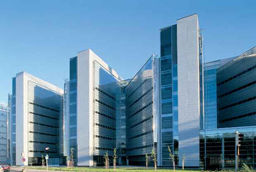What is Video Evidence?
Video Evidence is any sort of video used as permissible evidence in court of law. It can be recorded in video home system (VHS) or in digital format through a security surveillance camera or other devices. As there has been an increase in the use of both types of evidence, due to their validity in the court, it has led to a biased debate on its appropriate use.
Most often, Video footage from a CCTV camera is taken as an evidence for a crime in a public or a private place. As the technology is shifting towards digitalization, the use of digital surveillance cameras as evidence, during court trails is getting prominence. With the rise in the availability of video devices, people who found themselves unintentionally at the scene of a crime can capture video evidence by means of mobile phones and digital cameras and sometimes this video evidence can act a valid proof in the court of law.
While considering video evidence, it has to undergo a strict handling procedure in order to be admissible in the court of law. The name of the video evidence handler is registered and then the video is stored in a climate controlled place, in order to ensure that it is not available for modification in any way. If this strict handling procedure is not followed and if the video containing the evidence is produced in the court, it will be treated as inadmissible evidence.
Video evidence recorded through a mobile phone or a CCTV camera can be often granular and so it may not prove the crime in a legible way. Under these circumstances, the video is sent to a crime lab, where the licensed software professionals and technicians work on it and bring in a clear image without the background disturbances.
Due to the sophistication of the surveillance field, the deployment of digital video surveillance cameras has made the job a bit easier. Videos procured from these video surveillance cameras are excellent in quality and can be directly submitted as video evidence in the court of law.
Since, video editing software has become more ubiquitous, the video evidence has become less reliable these days. However, the technology has come up with a solution for it as it offers a code insertion frame by frame, so that if any editing is done, the code numbers will be out of sync. When the video evidence is produced in court for further trail, it is protected from over recording and wiping out.
It is a fact that a photo or a video is worth a thousand words and so the video evidence creates a lot of psychological impact on the culprit and can strengthen the trial with its accuracy and thus can sway a jury to make a decision.
Top Ten reasons for rejection of video evidence in court
Video Evidence plays a vital role in order to stop a crime or to seek justice after a crime. However, there are situations, where the court of law can reject a video evidence leading disappointment. A few of those reasons are listed below:
- Poor quality video and audio can result in the rejection of video evidence in the court of law. No matter if it is against a crime or a dispute, a video evidence shot in an amateur way, without the use of proper equipment or technique such as lack of a proper microphone, lighting, lens exposure, camera placement and so on…can result in utmost rejection in court.
- Video images sometimes cannot fairly depict the purpose of their representation, which can lead to rejection of video evidence.
- If distorted images or video is found in the evidence, then it can be rejected.
- If the video contains extraneous prejudicial matter, which can lead to a debating bias, then it can prove to be void.
- Gruesome and shocking images can also lead to rejection of the video evidence in the court. But still honesty and accuracy can also play vital roles in turning down the situation.
- If the video evidence lacks the reference points or measurement indicators to prove a situation, then it can be confusing and can lead to rejection.
- In case, the video evidence appears to be selectively edited or modified then it can look like a scripted narration and can lead to rejection.
- If there is significant difference in the time and change on scenery between the time of video capture and incident, then the events and circumstances can no longer correspond and can lead to biased video evidence.
- Videos which differ due to climatic changes such as haze, smoke, cloud covers, rains, lightening, and snow cannot be considered as valid evidence.
- If the video evidence is tampered with title addition, addition of background music, captions and is unsuitable and improper, it will surely get rejected in the court of law.
DNF Security
DNF Security is a subsidiary of Dynamic Network Factory headquartered in the heart of Sillicon Valley, CA.
©2020 Dynamic Network Factory
Follow us


